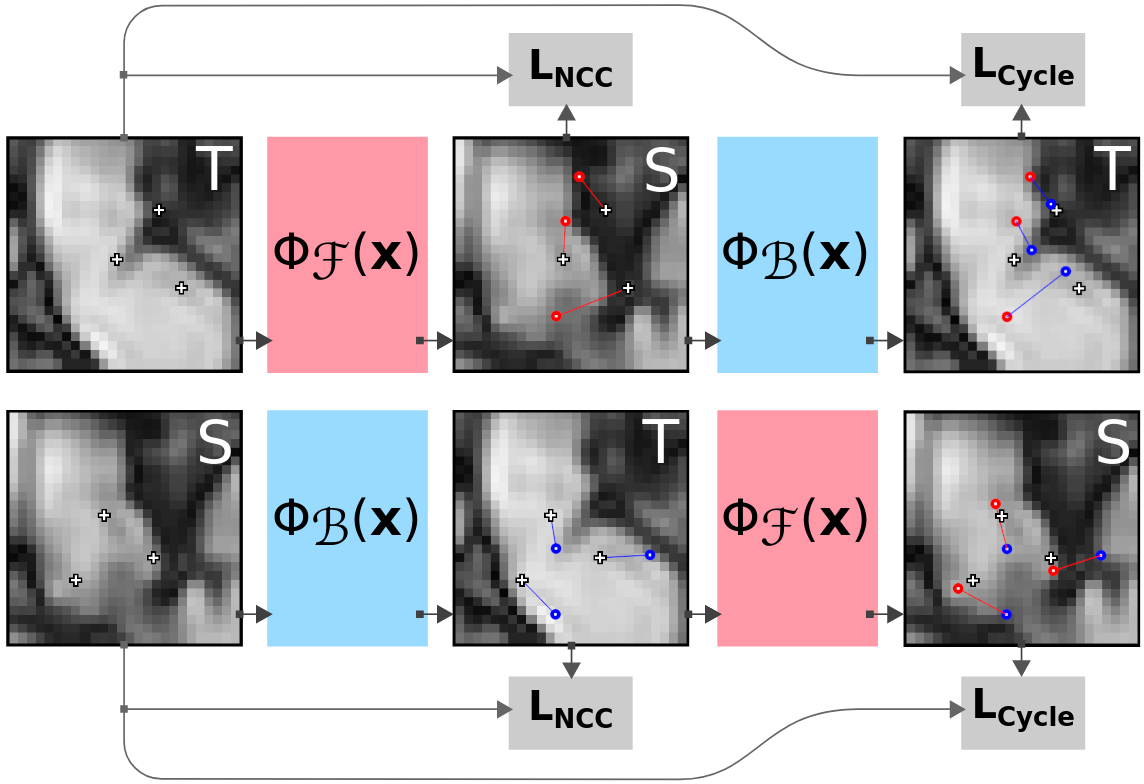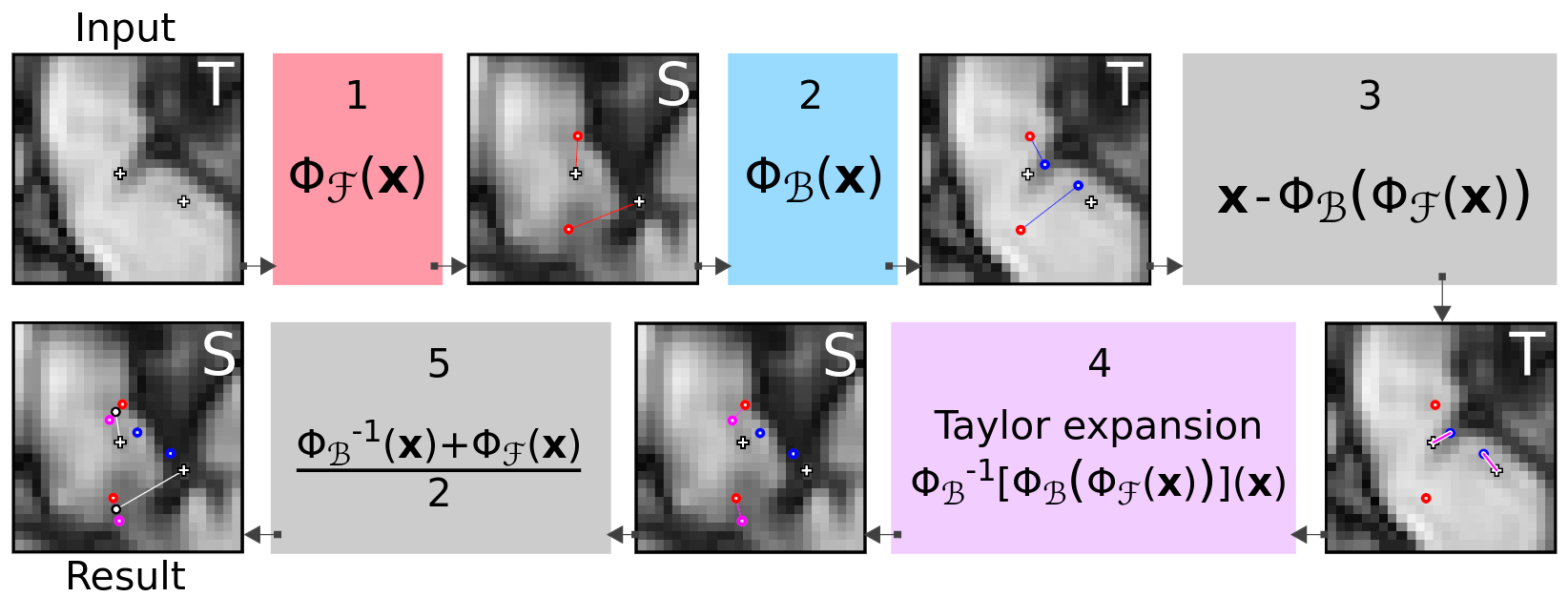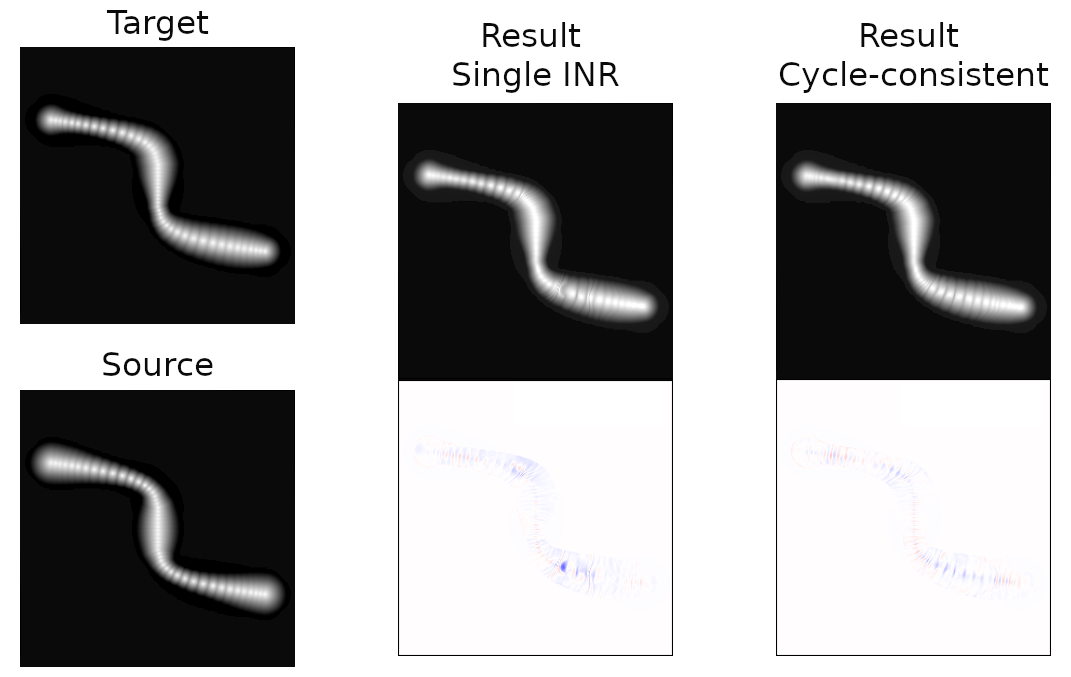Code for the paper Robust deformable image registration using cycle-consistent implicit representations, van Harten et al. 2024 (link to the paper, arXiv).
This method leverages cycle-consistency to improve the robustness and quality of deformable image registration with implicit neural representations. The method additionally yields an interpretable uncertainty metric which can be used for automatic quality control.
The method optimizes a set of cycle-consistent registration INRs. These are MLPs that parameterize the transfer function from image coordinates to the corresponding deformation vector fields, as proposed in Wolterink et al. 2022. A schematic overview of the cycle-consistent optimization procedure is shown below:
The optimized INRs can be treated as analytic functions, mapping arbitrary coordinates to deformation vectors. This means that, without any intermediate interpolation, we can use Taylor expansions on our Backward function to derive an estimated Forward function and vice versa. This means that, aside from stabilizing our optimization, we can use the second INR to derive a more accurate estimate of our desired registration: by inverting one of the functions, we can treat the set of INRs as a small ensemble, resulting in more accurate deformation estimates. On top of that, the disagreement between the two estimates can be used as a measure of uncertainty, which is valuable for automatic quality control. This inference procedure is shown below:
Cycle-consistent image registration is generally assumed to result in more plausible deformation estimates (as shown in e.g. Christensen & Johnson, 2001). Indeed, we observe this same effect when registering with cycle-consistent INRs. Below is an example of a simulated piece of small intestine with active peristalsis. While both results were optimized with the same regularization on the vector field, the deformations in the cycle-consistent results are much more anatomically plausible. For quantitative results, see the paper (arXiv).
This repository includes a script that runs the method for images in the DIR-Lab dataset. To replicate the experiments, prepare the data as detailed in the IDIR repository, make sure the DATA directory is correctly set in the run script (default: ~/DATA/DIRLAB). Finally, run python run_dirlab_cycle_consistent.py # where # is an optional case number that corresponds to a subject in the DIR-Lab set (default: 8).
To run the method on other images, use cycle_inference_script.py. This can be used to propagate landmarks, or to generate transformed images. The command line arguments should be self-explanatory. A set of simulated bowel images is included in the example_data, which can be run with run_example.sh.
If you use this code, please cite the accompanying paper:
@article{vanharten2024robust,
title={Robust deformable image registration using cycle-consistent implicit representations},
author={van Harten, Louis D. and Stoker, Jaap and I{\v{s}}gum, Ivana},
journal={IEEE Transactions on Medical Imaging},
volume={43},
number={2},
pages={784-793},
doi={10.1109/TMI.2023.3321425},
year={2024},
publisher={IEEE}
}


